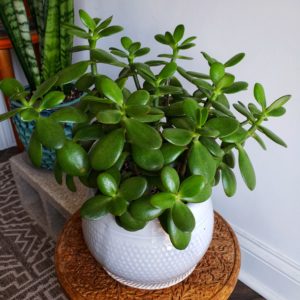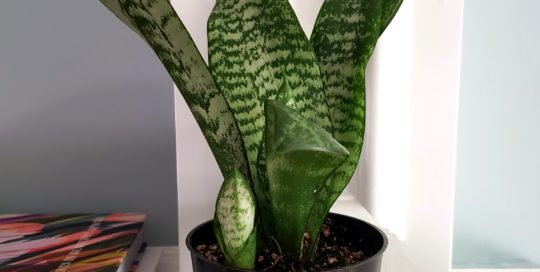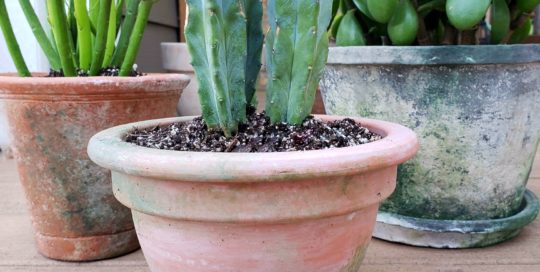5 Tips For Watering Your Houseplants
Views: 1144

Let’s admit it, watering plants is fun. This small act of giving and receiving makes us feel connected to our plants. Even kids like to give houseplants “a drink.” Watering seems simple, but can easily get complicated. We have such different ideas about how much and how often to water. I recently sold a sansevieria to a new plant owner who assured me on his way out that he would water it “every day” (gasp! – I water mine every three weeks). We can learn to water by trial and error, but it never hurts to know a few tricks. Here are five tips for watering your houseplant.
1) Water In The Morning
Plants absorb water based on the amount of sunlight they receive. The more light, the faster the rate of photosynthesis, and the more your plant drinks. If you water in the morning, your plant will have a whole day’s worth of light to utilize the water. If you water at night, your plant will likely sit in soggy soil.
2) Keep Soil Aerated
Soil tends to harden over time. This is because when roots absorb water they actually pull small particles of dirt closer to them. When you pour water over compact soil, it rolls off or seeps through cracks. To avoid this, keep soil aerated with a chopstick. Gently press the chopstick into the soil, being careful to avoid tearing roots. This will loosen soil and allow water to saturate the dirt evenly.
3) Water Equivalent To ⅓ Of The Pot Volume
How do you know how much water to give your plant? If you are unsure, judge by the size of the pot. A good rule of thumb is to water equivalent to about ⅓ of the pot’s total volume. This should give you a rough idea of how much water to pour in and will prevent overwatering or underwatering.
4) It’s Better To Underwater Than Overwater
If your plant looks droopy or dehydrated chances are it needs water. If you are still not sure just wait a bit longer. You can reverse the damage from underwatering, but you can not reverse the damage from overwatering. I wouldn’t recommend using this method all the time, but if you are unsure about how often to water, you can use this method once or twice to gauge the correct span of time between waterings.
5) Set Your Tap Water Out Overnight
Improve the quality of your tap water by setting it out overnight. This minor detail can make a big difference for delicate tropicals like spider plants. Most tap water contains harsh chemicals that turn leaf tips brown. If you let your tap water sit out overnight, the chlorine evaporates, and it’s much gentler on your plant. If you have access to rainwater, that’s even better, but if not just set your tap water out before using it.
Meet Paula Palma
Paula has a teaching background in pilates, yoga, and meditation. She is currently studying biology as a prerequisite for further education. One of her favorite…
Paula's Recent Posts

What To Do When You Inherit A Houseplant






